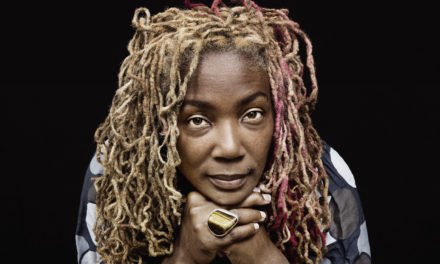
For anyone involved in learning and development, it’s not enough to just build well–designed diversity, equity and inclusion training programs. To ensure sustainable, systemic progress, we need to examine the underlying biases that exist at the very core of an organization’s learning development infrastructure.
Regardless of the subject matter, all training should be grounded in inclusive and equitable practices. Yet, often training materials do not represent diversity and may even reinforce stereotypes and biases.
Regardless of the subject matter, all training should be grounded in inclusive and equitable practices. Yet, often training materials do not represent diversity and may even reinforce stereotypes and biases. Click To TweetThe majority of people responsible for building an organization’s training infrastructure and managing learning development experiences fall within a narrow set of demographics — white females with advanced degrees. According to the U.S. Bureau of Labor Statistics, as of 2020, over 50% of training development specialists, managers and instructional design professionals are female, and over 80% are white. Over 60% have a master’s degree.
Inevitably, the perspectives, beliefs and biases of this significant majority will unconsciously filter into the design and delivery of training programs.
Embedding DEI into every aspect of learning and development begins with deconstructing every aspect of design in order to identify blind spots and stereotypes. There are three critical areas to examine in diversity training content: names, visuals and experts.
Embedding DEI into every aspect of learning and development begins with deconstructing every aspect of design in order to identify blind spots and stereotypes. Click To Tweet1.) What’s in a name?
Have you ever noticed when you are in a training session, instructors often give hypothetical characters names like “John” or “James” or “Mary”? As in, “Let’s say you walk into the break room and Jim is talking to Mary when their boss Bob comes in….”
Why do they seem to be the first names that come to the trainers’ minds? Why can’t it be Hye Jung, Asad and Dashawn talking in the break room?
Considering that the training field is overwhelmingly white, the use of “typically white” (not to mention Biblically-derived) names is indicative of the inherent biases that we all bring to our work. People will tend to immediately think of names that are most familiar to them. Facilitators, then, must push themselves to use culturally diverse names in order to indicate a commitment to, and valuing of, diversity.
2.) Visuals
Stereotypes also continue to abound in the choice of job functions that are assigned in case studies or scenarios. For instance, the positions of status—like executives, lawyers and engineers—often are occupied by characters who are white cisgender males. Women and people of color tend to be given supporting roles, like administrative assistants, associates or interns.
Studies examining Google Image search results for 96 different occupations as late as 2019 show biases in terms of gender and skin color. Although there is more overall representation of gender diversity than in past studies, there is still a dearth of gender anti-stereotypical images (e.g., male nurses or female construction workers). Furthermore, although there has been an increase in representation of BIPOC people, the skin tone tends to be lighter, with less representation of darker skin tones.
Stock images also do not often represent people with disabilities or LGBTQ identities… unless these identities are the explicit focus of the training session. It is critical to decenter this norm by disrupting the assumption that people with these identities only need to be represented when their identities are the topic at hand.
Although Internet search engines have become more aware of bias and more intentional about representing diversity in their image searches, there is still a deep degree of mental conditioning that many of us need to overcome in terms of who we “see” in certain positions—and choosing diverse images is one small but important way to begin this reconditioning.
3.) Expertise and Inspiration
The authors, academics and leaders who are cited or spotlighted in training can also reveal implicit biases and blind spots. Often in training programs, the quotes and academic resources cited are Western, white and male. Panels and guest speakers often tend to be disproportionately male and white as well — likely due to biases about who is most knowledgeable or able to resonate with audiences.
Consider who is most often featured in the video clips in training. For example, the TED website has a playlist of the 25 most watched talks. 21 out of the 25 speakers are white.
Where to start
For anyone involved in learning and development, commit to the following:
- Selecting names and graphics that represent diversity
- Assigning roles in examples, scenarios and case studies that break down stereotypes
- Presenting diverse actors, academics and experts in video clips
- Citing a diverse collection of sources and using quotes from a diverse pool of authors
Beyond these practices, there is much more we can and should do as learning professionals to mitigate bias in training design and delivery. Bring a DEI lens to every aspect of the design process, and seek divergent voices and perspectives to challenge biases that are reinforced in the classroom.
Bring a DEI lens to every aspect of the design process, and seek divergent voices and perspectives to challenge biases that are reinforced in the classroom. Click To Tweet


















